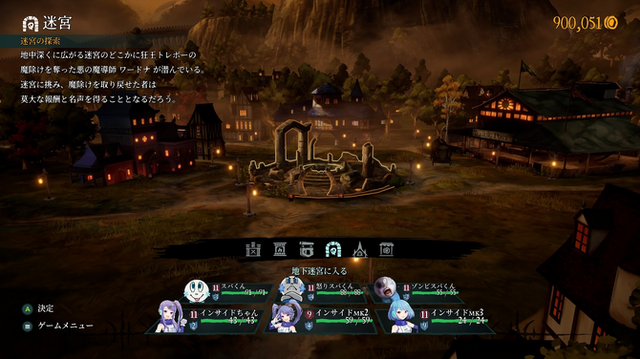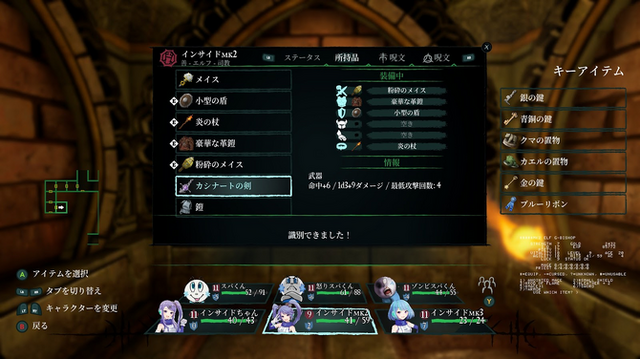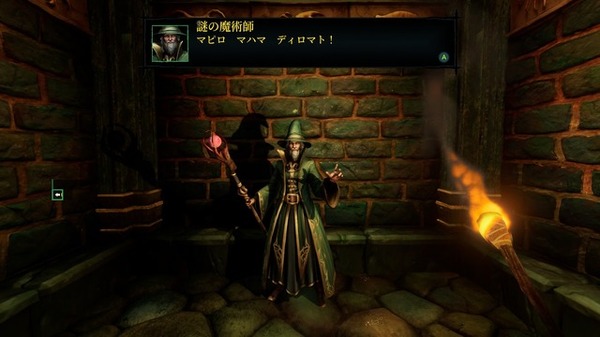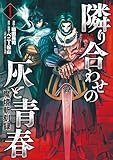The first game in the Wizardry series was released for the Apple II in September 1981.Wizardry: Proving Grounds of the Mad Overlord. In this article, we will present a play report using the official preview for the press regarding the remake version of the game, which has finally left early access and will be officially released on PC/PS5, PS4, Xbox Series X|S, Xbox One, and Nintendo Switch. I will deliver it.
In addition, Digital Eclipse provided us with the official preview code for the writing of this article.
Advertisement
Game*Spark also interviewed Robert Woodhead, the original programmer of the original Wizardry game, and Justin Bailey of Digital Eclipse, who was in charge of developing the remake.
Officially supports Japanese.You can choose between two types of translation: FC version and PS version compliant.
Our magazine previously published a play report on the early access version in September 2023. Please also see this article for an overview of the game.
In addition to the changes made in the official version, this article will explain the differences between this work and previous Wizardry games, including the original, and the major changes to the rules of the game for former players who came into contact with this work in this official version. We will mainly introduce the optional items that you can choose from.
The basic structure of the game – “form a party of six adventurers, enter a labyrinth, defeat monsters, collect items, gain experience points, level up, and defeat the magician Wardna at the deepest level of the labyrinth” – has not changed from the original or the early access version, but many aspects have been improved since the early access version.
Advertisement

The biggest change from Early Access is that it now supports multiple languages, including Japanese. All messages in the town of Trevor Fort and the labyrinth are now in Japanese.

Spell names such as “Dios'', “Catino'', “Madi'', and “Tiltwait'' are rarely used outside of the classic “Wizardry'' for various reasons.

Item names have also been translated into Japanese, and the weapon whose name was changed to “Vorpal Blade” in the game's English setting due to copyright issues remains “Cassinart's Sword” when switched to Japanese settings!

In addition, in this game, you can select two patterns of Japanese notation for both item names and spell names in the “old school setting” described later.
“Japanese 1” uses the FC version's notation, such as “Sword of the Cut” and “Armor of the Masurao”, while “Japanese 2” uses the PS version's (“Lilgamyn Saga”) notation, such as “Long Sword +1” and “Plate Armor +1”. If you want to play with the familiar item names of the FC version, choose “Japanese 1”, and if you want to understand the item performance, choose “Japanese 2”.

In Japanese, the opening hours of the last boss Wardna room are “until 5:00 pm'', which is two hours longer than the original, which is in accordance with the past Japanese version. The Japanese Warders seem to be more diligent.
“Keys” and “ornaments” are now essential items. Changes to the early labyrinth structure that also serves as a tutorial.

“Wizardry: The Mad King's Trial Field'' has three types of keys: “Bronze Key,'' “Silver Key,'' and “Gold Key,'' and 3 types of keys: “Bear Figurine,'' “Frog Figurine,'' and “Blue Ribbon.'' There were key items, but in past versions, only the “Blue Ribbon” was required to clear the game, and you could ignore the other items and move on.
However, in this official version, the dungeon structure has been slightly changed.The structure has been modified so that you cannot enter the Monster Allocation Center, a difficult area in the middle of the game, unless you collect all key items except for the Blue Ribbon.
These items can be found by exploring every corner of the relatively safe basement floors 1 and 2, so this is a good change that also serves as a tutorial for beginners. In this remake, these key items are managed separately from each player's own items, so you don't need to worry about them taking up too much space in your inventory.
An adventurer's new mission. Complete the “Monster Encyclopedia”!

This game has a “Monster Encyclopedia” feature that records information about monsters you've defeated. There are four stages to identifying monsters:
Completely unconfirmed (silhouette is displayed even in battle)
Name confirmed (silhouette display removed, name, number of appearances, and experience value revealed)
Partially identified (race, AC, HP, and number of attacks known)
Complete identification (resistance, special actions, special abilities revealed)
When encountering an unidentified monster, identification from 1 to 2 may be performed, but further identification can only be achieved by successfully executing the command “Inspect'' during battle, or by casting the monk magic “Ratsumapik''. there is no.
For those who are familiar with the “Wizardry” series, the “Ratuma Pick” in this work is not a magic that stays during exploration and automatically strengthens the judgment to identify enemies, but is compatible with the Apple II version. Therefore, it is a magic that allows you to identify enemies individually during battle.

The monster identification status will be carried over even after the battle ends, and once you have achieved complete identification, you will be able to view each monster's explanation and treasure chest drop information from the “Monster Encyclopedia” in the game menu. The explanations for the monsters are written by Benny Matsuyama, who wrote “All About Wizardry,'' which is known as a masterpiece of strategy books, and is a good read.

Another new feature is the ability to see information such as what a treasure chest will drop if it is dropped, which will be useful when hunting for desired items.
This time's character making and the large number of mercenaries

This time, you can choose to start your adventure using the default Lv2 party members, or create your own Lv1 characters as in previous Wizardry games. The default Lv2 party (2 warriors, a priest, a thief, a bishop, and a wizard) has slightly higher HP and is much more stable than the Lv1 characters with lower HP, so if you want to avoid the hassle of character creation, you can use this party. The names and appearances of the default party members can be changed later in the training grounds, just like other characters.

When creating a character from scratch at the training field, the familiar flow is as follows: select race → allocate bonus points to characteristic values → select profession → select personality → select appearance → decide on name…
By default, the bonus points for each attribute are fixed for each race.However, by using the “Old School Setting” described below, it is possible to change this to random bonus points, similar to most of the previous games in the series.
In addition, this time it is essential to set the character's appearance. Although there are no restrictions on the choices based on race, it is undeniable that each appearance has a strong impression of a Western game. (In the first place, this remake is a purely Western game…) In the case of the Japanese-made “Wizardry”, there is no profession icon to replace the face that is used in many games, including “Five Trials”, so you should still choose one somehow.
However, in the PC version, by placing a 512×512 png image file in the “(game installation folder) → murphy → Content → Custom Portraits” folder, you can use that image file for appearance selection. If you use this function, you can use icons instead of faces to eliminate the visuals of people, send Supa-kun naked to the vanguard and lose him, raise a black bass that can chant Maharit, etc. It is possible. This feature is also used in the screenshots in this article.

A new feature of this remake in terms of character creation is the ability to recruit mercenaries at Gilgamesh's Tavern. The level of the mercenaries you can recruit depends on the highest level character in your current save data, and you can hire characters with strengths that are almost comparable to your party members.
This is a useful feature when you want to build a second party in case your party is wiped out, or when you want to add a member to your party when you feel like it. Once you hire a mercenary, you can change their name and appearance at the training center just like other player characters.
“Old School Settings” allows you to set your own game settings

This game has an “Old School Settings” option that allows you to make various game specifications closer to previous works or incorporate new features. There are many items and many items, so many players may be confused. From here on, we will look at these items that have not been explained.
Attribute value changes when leveling up
If you choose “Select”, 1 to 3 bonus points will be allocated to abilities when you level up (abilities will not decrease). If you choose “Random”, each ability will randomly increase by 1, remain unchanged, or decrease by 1 when you level up, just like in other series titles.
Character aging method
If you select “Vitality”, the character's age will be replaced with the ability value “Vitality”. The higher this value is, the easier it will be for your ability values to increase when you level up. Your “vitality” may drop when you stay at an inn, but in my experience it rarely drops below 90%. If you select “Age”, the age will be set for the character like in traditional wizardry, and as the age increases, it will be difficult for the character's ability values to increase.
Inn system
If you choose “Remake,” your HP and MP will be fully restored completely free of charge when you stay at an inn.Honestly, it's super convenient.If you choose “Original”, you will be forced to sleep in the stable and recover your MP, as in the original, while recovering your HP little by little using the recovery magic of Sparrow's Tears.
temple style
If you choose “Remake”, the cost of treating abnormal conditions and reviving will be significantly cheaper, and even if you are level drained, you will be able to recover the experience points you lost at the temple. In this game, even if you are level drained, the only thing that will decrease is your maximum HP, in addition to your experience points and level.
Recovering from level drain requires a fair amount of money, but if you recover experience points with this option, you will be able to instantly level up again, giving you a chance to further improve your ability scores… in other words, this option makes level drain a kind of benefit.
If you set it to “Original”, it will quickly turn into a rip-off and hypocrisy temple just like the original. Naturally, there is no level drain recovery function.
fellow employment
This is an option to set whether or not mercenaries can be hired at the aforementioned Gilgamesh Tavern. If you set it to “Disabled”, mercenaries cannot be hired.
Minimap
Like most titles in the same genre in recent years, the path you walk in the dungeon is constantly displayed as a minimap. However, in this game, even if you get caught in a teleport trap or rotating floor in a dungeon, the minimap on the screen will be recorded as if you were not caught in a trap, and the minimap will gradually become more bizarre. Therefore, it is dangerous to take it too seriously. When set to “Disable”, the minimap itself will be hidden.
View map in Dumapic
Set whether to display a detailed map of the floor you have walked so far when you use the Lv1 Wizard spell “Dumapic”. The map displayed by this spell is different from the minimap and shows an accurate map of the floor. If you set it to “Disabled”, only the coordinates of your current position will be displayed when you use this spell.
Hint messages through conversation
If you enable this setting, various hint messages will be displayed in the form of conversations with your companions in the dungeon. If you disable this setting, they will not be displayed.
Tragedy strikes the wiped out party
If the party is wiped out, the corpse will be left behind at that location, but if you enable this option, the corpse will be lost as in previous series, or some of the corpse's belongings may be lost. If you disable it, the corpse will not be lost or items will not be lost in the event of a party wipeout.
As a side note, there is an urban legend in the “Wizardry” series that says, “If a party that has been wiped out is left in the labyrinth for a long time, it will become lost,” but basically in all works, when the party is wiped out, 1 Only a degree determination is made.
Use spells during first strike
When this function is enabled, you will be able to use magic when attacking first, regardless of whether you are an enemy or ally. While it is certainly advantageous when your allies attack first, what is truly frightening is being attacked first by a large number of enemies who use magic.
If you are following the Apple II version, it would be correct to set it to “Enabled”, but if you are attacked first, you will be wiped out in an instant by the sheer number of group attack spells.
Unless you want to play at a very high difficulty level, it is best to leave this function disabled. The version of Wizardry that most players have played probably has this function disabled.
However, this functionIt has no effect on the enemy's breath attacks and is used for pre-emptive attacks.So don't let your guard down.
Hide/surprise
This is an element added in “Wizardry V” that allows rear guard thieves to hide and then launch a surprise close-combat attack on the enemy's front row on the next turn. It was also included in the SFC versions of “Wizardry I, II, and III,” so it seems to have been adopted as an option this time.
In this game, there are few powerful weapons that the thief can equip, and it gives the impression that it is a bonus feature, but it is probably a good idea to leave it “enabled” for now. However, please note that the thieves who carry out a surprise attack will be subject to direct attack by the enemy even if they are in the rear guard.
Monster definite/uncertain system
When this function is set to “Disabled”, enemies in every battle will be randomly determined/undetermined, just like in the Apple II version. When set to “Enabled”, the monsters will be determined according to the monster encyclopedia.
Automatic target correction
If you enable this function, when the targeted enemy group is annihilated, it will automatically attack other groups, and it will also cancel the blank spell attack when there are no spell targets. Unless there is a special reason, you can leave it as “enabled”.
Escape in the order of action
If you enable this function, the “escape” command will be enabled for each character, and if even one character successfully “escapes”, it means that they have successfully escaped from the battle. If set to “Disable'', the escape judgment will be made only once at the start of the turn, and if you fail, you will be subject to all-out attacks from the enemy. In this game, where the success rate of escape is low, it is better to set it to “Enable'', which gives you multiple chances to escape.
Depending on the contents of these “old school settings”, you can create your own play style, from a completely unforgiving reproduction of the Apple II version, to adjustments closer to the FC version, to settings that are quite user-friendly in line with the era of 2024. can be set to
This remake retains the feel of the Apple II version while adding modern options. Some people may find the tempo a little off.

So far, we have introduced the main features of this remake, including the many options available, but there are also other parts that retain the harsh feel of the Apple II version. We will list them below.
Forget the usual strategies from the FC version and the Wizardry Gaiden series, such as putting enemies in the early stages to sleep with “Catino” and silencing enemy magic users with “Montino”. In this game, like the Apple II version, status ailment magic has almost no effect on enemies, and there are no adjustment options for those areas. In the early stages, there are many situations where it is better to reduce the number of enemies with the direct damage of Harito, which is guaranteed to hit, rather than Katino, which can only be used if you are lucky.
In this game, there are two groups of enemies on the first basement floor. There is a good chance that two Murphy's Ghosts, a friend of veteran Wizardry players who are good at earning experience points, will appear at the same time. If two of them appear at the same time, it will be a tough battle for those around level 3.
From the middle of the game onwards, the escape rate from enemies drops drastically. It's best not to run away and reroll until you find an enemy with high EXP on the 10th basement floor.
The “reset technique” that many players talk about in “Wizardry” only has a limited effect in this remake.
Dangerous!andBefore you thinkClose the game by selecting “Quit Game” from the menu or “Alt+F4”. You can return to the game right before something bad happens. Furthermore, even if you drop the game after getting into a dangerous situation, you can still leave the battle, but the dangerous situation will remain the same.
In addition, the monsters in this game are now in 3D, so their appearance and attack effects have been added. The effects themselves aren't bad, but it is true that they do hinder the tempo of the battle a little. The tempo is fine when sweeping away monsters with area attack spells, but when fighting them one by one, the tempo feels a little off.
This poor tempo may be more of a concern for Wizardry enthusiasts who have played a variety of Wizardry games than for those playing this title for the first time (the aforementioned Murphy's Ghost is not only tough to begin with, but also has elaborate effects, which has a big impact on the tempo. In this game, once the magician learns Maharit Laharit, it may be a good idea to move your earning area to the 4th basement floor).
In addition, at the start of early access, many of the background music tracks were arrangements of songs by Kentaro Haneda from the Nintendo Entertainment System version, but in the official version,The FC version music arrangement is only for the title screen and the fanfare at the end of the battle.The fact that it has become so is also seen as a negative point by some people. However, I would like to emphasize that the songs added in place of the game fit the atmosphere of exploring the underground labyrinth well, and are by no means low-quality songs.

That said, the existence of this work is significant just because this work, which has been in a “sealed” state for a long time, has overcome various problems and has been revived in modern times. If you want to experience this work, which became the origin of various computer RPGs, or if you simply want to try a challenging computer RPG in 2024, this work is well worth the challenge. It will be there.
A word from Spa-kun
This is the game that is the origin of computer RPGs and DRPGs! With its high level of difficulty, unreasonableness, and hack-and-slash fun, I think it's worth playing Spa! at least once!
title:Wizardry: Proving Grounds of the Mad Overlord
Compatible models:PC (Steam/GOG.com)/PS5/PS4/Xbox Series X|S/Xbox One/Nintendo Switch
Platforms featured in this article:PC (Steam)
release date:May 23, 2024 (Steam official version May 24, 2024)
Author play time:28 hours (including play time from early access)
Subscription delivery available:Nothing
price:3,980 yen (tax included)
*Product information current at the time of writing.
Regarding the Wizardry series, Steam is offering a spin-off spin-off game calledWizardry Gaiden: Five Trials” is also available. With a simple system, you can enjoy numerous independent scenarios and user-created, highly original mod scenarios on one software. It also has options for core players, such as manual input of trap names and spells.



